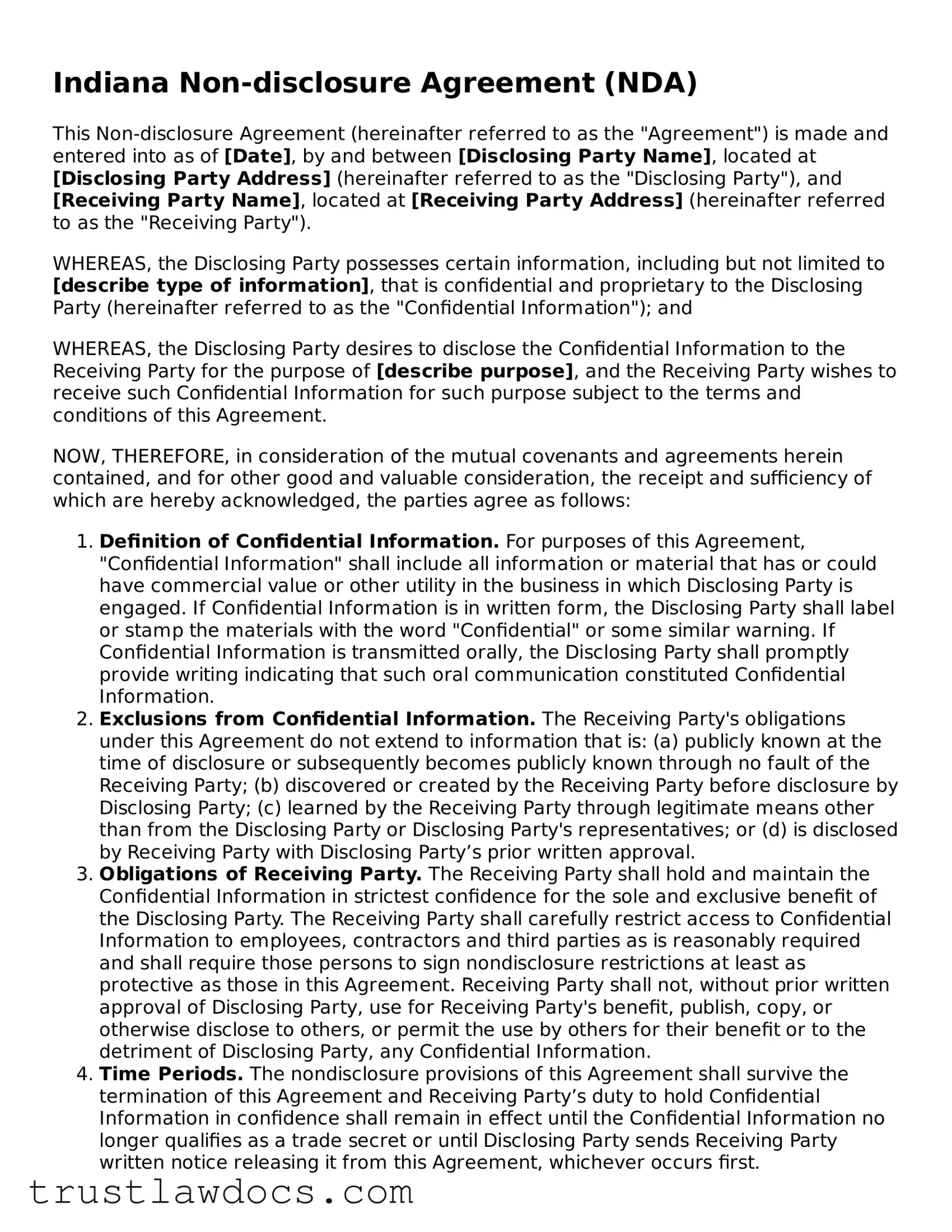What is an Indiana Non-disclosure Agreement?
An Indiana Non-disclosure Agreement (NDA) is a legally binding contract between two or more parties in Indiana, designed to protect sensitive information. When parties sign this agreement, the recipient of the information agrees not to disclose the confidential details to anyone else without explicit permission.
Why would someone need an Indiana Non-disclosure Agreement?
Individuals or businesses might need an Indiana NDA to safeguard trade secrets, proprietary information, or any data that gives them a competitive advantage. This agreement is particularly useful during negotiations, partnerships, or when sharing innovative ideas with potential investors, employees, or contractors.
Are Non-disclosure Agreements enforceable in Indiana?
Yes, Non-disclosure Agreements are enforceable in Indiana, provided they are reasonably necessary to protect the business's interests and do not impose unreasonable restrictions on the receiving party. The terms must be clear, and the scope of the confidentiality obligation should be well-defined.
What should be included in an Indiana Non-disclosure Agreement?
An effective Indiana NDA should include the definition of confidential information, the scope of the nondisclosure obligation, the term (duration) of the agreement, and any exclusions from the confidentiality obligation. Additionally, it should outline the consequences of breaches and any permissible disclosures, such as those required by law.
How long does a Non-disclosure Agreement last in Indiana?
The duration of an NDA in Indiana can vary based on the agreement's terms. Typically, parties may agree on a fixed period (e.g., 2, 5, or 10 years), or the agreement might specify that the obligation lasts indefinitely, especially for trade secrets.
Can a Non-disclosure Agreement cover oral information in Indiana?
Yes, an Indiana NDA can cover oral information. However, for the NDA to be enforceable regarding oral disclosures, the agreement should specifically mention that oral information is included, and the disclosing party typically must indicate that the information is confidential at the time of disclosure.
What happens if someone breaks an Indiana Non-disclosure Agreement?
If someone breaches an Indiana NDA, the non-breaching party may pursue legal action to seek damages or injunctive relief. Injunctive relief is a court order to stop the breaching party from further disclosures. Damages might include financial compensation for losses incurred due to the breach.
Is a lawyer necessary to create a Non-disclosure Agreement in Indiana?
While it is possible to draft an NDA without a lawyer, consulting with a legal professional skilled in Indiana law can ensure that the agreement is enforceable and tailored to your specific needs. A lawyer can help navigate the complexities of confidentiality obligations, making the agreement more robust.
